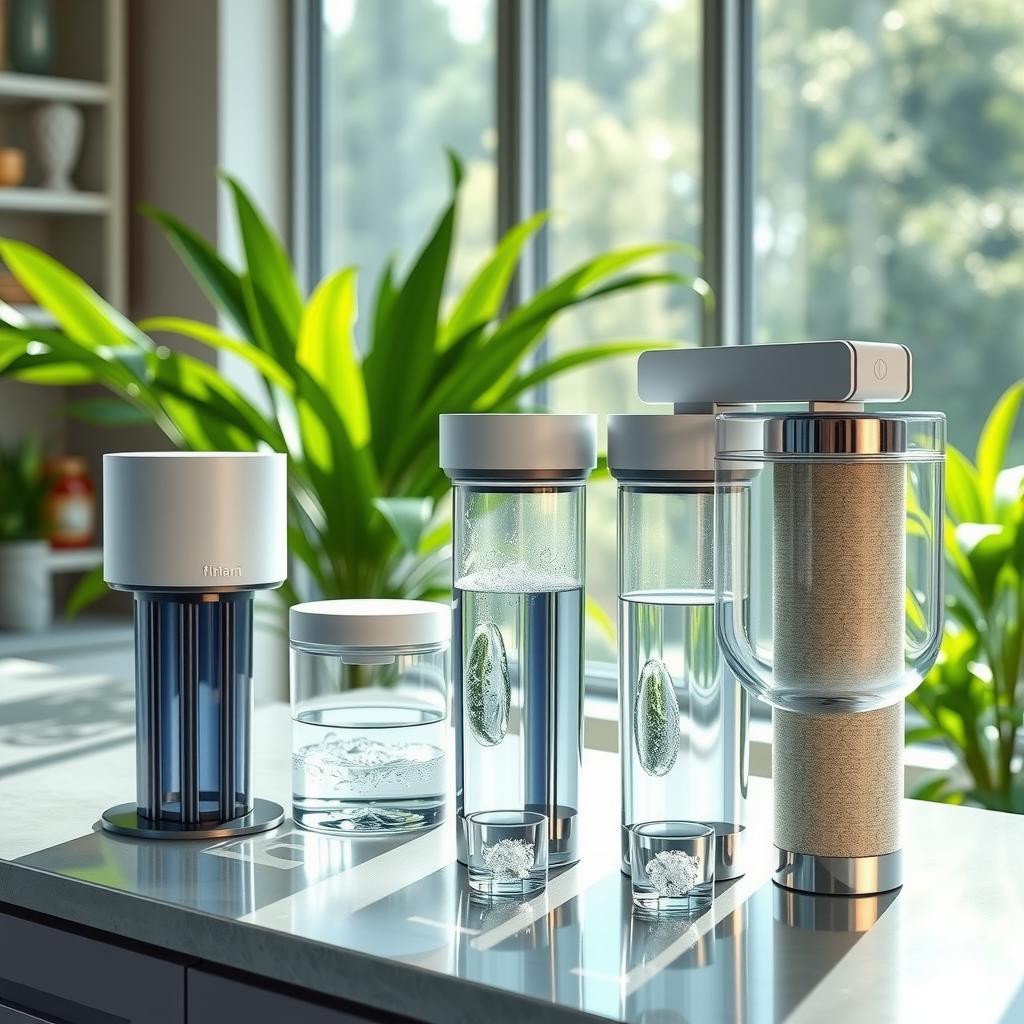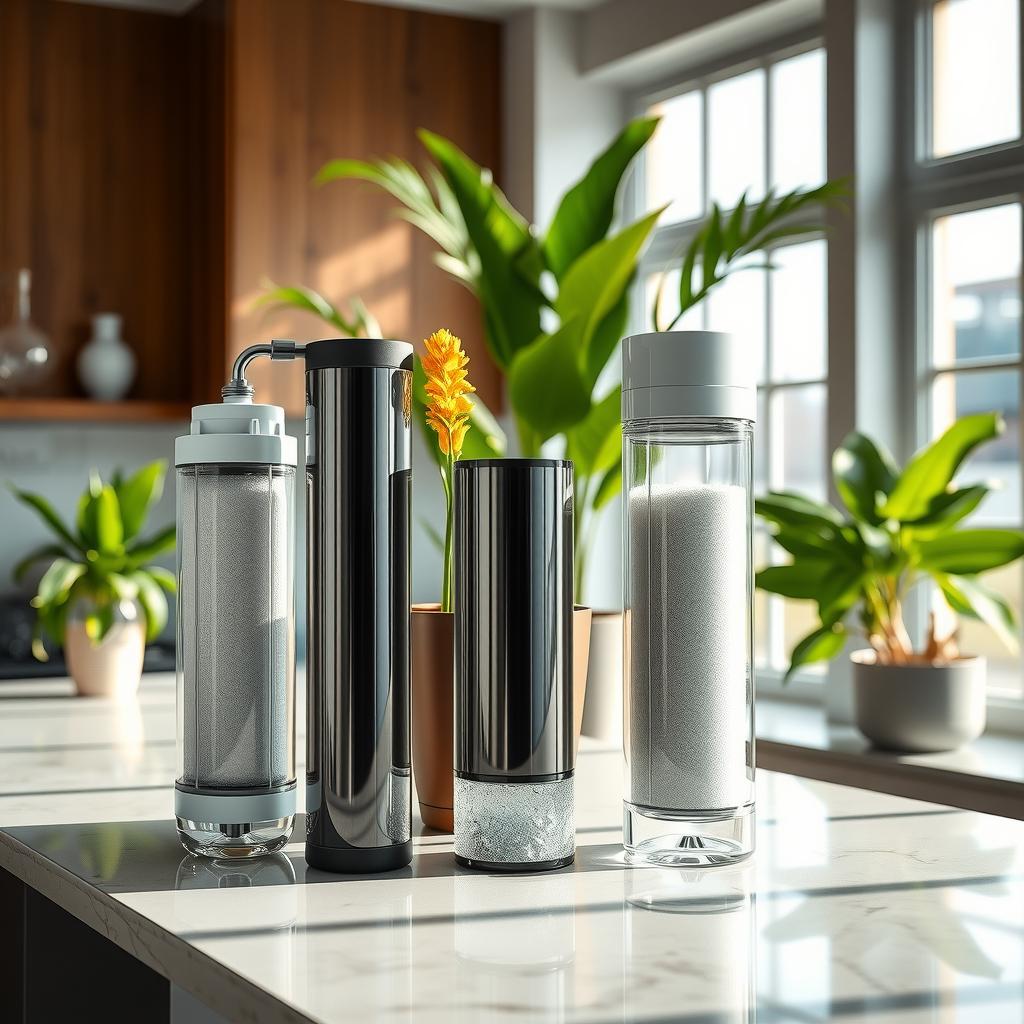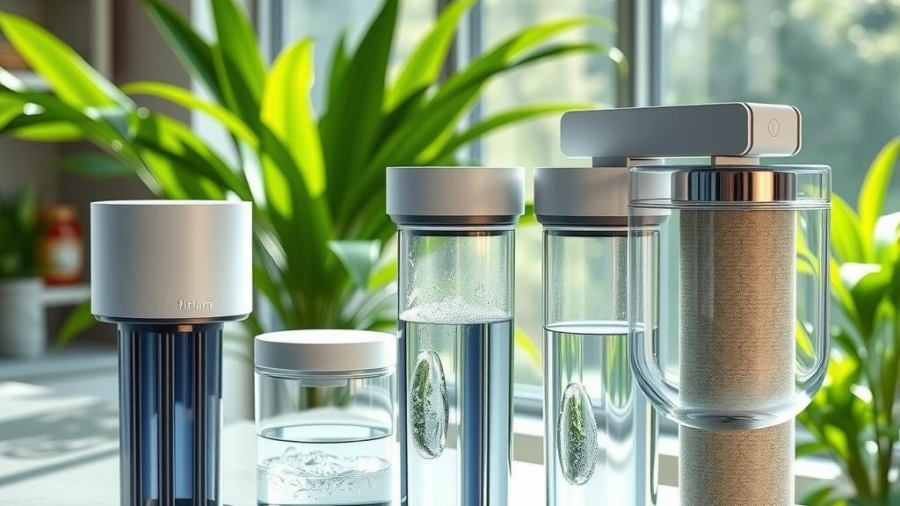Have you ever wondered if your water filtration system is truly meeting your household’s needs? Many homeowners invest in a filtration solution, but often overlook one critical aspect: the size of the system. Choosing the right size water filtration system is not just about convenience; it directly impacts both water quality and overall health. With so many options available, determining which product aligns with specific filtration needs can be overwhelming, leaving individuals unsure of how to proceed.
This guide aims to demystify the process of selecting an appropriately sized water filtration system by breaking down essential factors that every consumer should consider. Whether it’s understanding flow rates or assessing household consumption patterns, this article provides insights into how proper size selection can yield effective solutions for clean and safe drinking water. Readers will find that making informed decisions about their water filtration systems translates into better tasting and healthier water.
By exploring key considerations such as local water conditions, family size, and usage habits, this article highlights why appropriate sizing is crucial for any homeowner looking to enhance their living environment through improved water quality. Moreover, readers will discover installation tips that enable them to maximize efficiency from their chosen filters while minimizing potential waste.
As consumers navigate this journey towards cleaner drinking options, they are encouraged to evaluate various products thoroughly before committing—after all, investing time in choosing the right size ensures long-term satisfaction with one’s purchase. By addressing common pitfalls associated with inadequate sizing and outlining best practices for evaluating different models on the market today, this comprehensive guide serves as a valuable resource for anyone seeking clarity amidst confusion.
In essence, understanding how to choose the right-sized water filtration system is not merely an exercise in practicality; it represents a commitment to personal health and environmental sustainability. Join us as we delve deeper into each element of this important decision-making process—because everyone deserves access to pure hydration without compromise!

Key Points:
-
Assess Your Household Size: Understanding the number of people in your home is vital for determining the appropriate water filtration system size. Larger households typically require systems with greater capacity to meet daily water demands effectively.
-
Evaluate Daily Water Consumption: Calculating daily water usage can significantly influence size selection. By knowing how much water is consumed for drinking, cooking, and other household activities, individuals can choose a filtration system that adequately addresses their specific filtration needs.
-
Identify Local Contaminants: Different areas may have distinct contaminants in their water supply. Researching local water quality reports helps consumers select a water filtration system tailored to target those impurities efficiently, ensuring optimal water quality for health and well-being.

Understanding Household Filtration Needs
Assessing Water Requirements Based on Family Size
When it comes to selecting the right water filtration system, understanding household size and daily water consumption is paramount. The number of people living in a home significantly influences the amount of water they use each day, affecting not only their hydration needs but also their cooking, cleaning, and bathing routines. For instance, a household with four members may require substantially more filtered water than a single-person residence. This variation necessitates careful consideration when choosing appropriate filters to ensure that the system can efficiently meet these demands without compromising on quality.
Moreover, daily water consumption patterns often differ among various demographics; families with young children might have higher usage due to increased cooking and laundry loads, while older adults may prioritize drinking water for health reasons. Thus, assessing individual or family habits becomes crucial in determining the ideal capacity and type of water filtration system needed for optimal performance. By considering specific factors such as frequency of appliance use—like dishwashers or washing machines—and lifestyle choices including gardening or pet care—homeowners can better tailor their filtration solutions to fit unique requirements.
Tailoring Your Filtration System
Importance of Customization Based on Household Dynamics
The diversity in household sizes and compositions underscores why customizing your water filtration system is essential for effective solutions. A one-size-fits-all approach does not suffice because different households face varied challenges regarding contaminants found in local tap water sources as well as differing purification needs based on personal preferences or health concerns. For example, larger families might benefit from whole-house systems that provide filtered water at every tap compared to smaller households which could opt for point-of-use systems like under-sink filters.
Furthermore, understanding local regulations about municipal water supplies can guide homeowners toward choosing filters that specifically address prevalent issues such as hard minerals or chlorination by-products common in urban areas versus rural settings where well-water contamination could be an issue. It’s vital to assess both current conditions and future changes within a household—such as planning for new family members—to ensure longevity and functionality of any chosen solution over time.
Installation Insights & Effective Solutions
Navigating Water Quality Challenges
Navigating through various options available when selecting a water filtration system requires knowledge not just about products but also installation tips tailored towards different home setups. Homeowners should consider whether they prefer DIY installations—which may save money—or if hiring professionals would yield better results given complexities involved with plumbing connections required by certain units like reverse osmosis systems or multi-stage filters designed for comprehensive purification processes.
Equally important is maintaining awareness about ongoing maintenance needs associated with selected systems; regular filter replacements are critical to preserving effectiveness against unwanted contaminants that compromise overall water quality. Additionally, familiarizing oneself with troubleshooting procedures enhances user experience while ensuring safety standards are consistently met across all applications involving potable drinking sources within homes.
By recognizing how household demographics influence everyday usage alongside practical considerations surrounding customization options available today—from compact countertop models suitable even for limited spaces up through expansive multi-filtered designs catering effectively towards larger populations—it becomes clear: tailoring your approach leads directly toward achieving best-in-class outcomes fitting individual lifestyles seamlessly intertwined throughout domestic life.
Understanding Local Water Contaminants
Essential Insights into Regional Water Quality Issues
Water quality varies significantly across different regions, influenced by factors such as industrial activity, agricultural runoff, and the presence of aging infrastructure. Common contaminants found in local water supplies include bacteria, heavy metals like lead and mercury, nitrates from fertilizers, and organic compounds due to agricultural practices. These impurities can pose serious health risks if consumed over time. To ensure safe drinking water, individuals should be proactive about evaluating their local water supply’s specific contaminants. A reliable water filtration system tailored to address these issues can dramatically improve water quality by removing harmful substances that may affect both health and taste.
In selecting a suitable water filtration system, it is crucial for consumers to understand the unique challenges posed by their local environment. For instance, areas with high levels of agricultural activity might require systems specifically designed to filter out nitrates or herbicides effectively. On the other hand, urban settings could have elevated lead levels due to old piping systems that leach this toxic metal into drinking water supplies. Therefore, conducting thorough research on regional contaminant profiles is essential before making any purchases.
Choosing the Right Filtration System
Factors Influencing Effective Filtration Solutions
Choosing an appropriate water filtration system involves understanding various factors related to one’s specific needs regarding contamination types and household size considerations. The first step is often testing home tap water through certified laboratories or at-home testing kits available at most hardware stores; this will provide clarity on which impurities are present in significant amounts.
After identifying potential contaminants—from bacteria requiring UV treatment solutions to heavy metals needing reverse osmosis—consumers must also consider system capacity based on daily usage requirements for sufficient clean drinking water throughout their households’ routines without interruptions caused by frequent changes or maintenance needs associated with smaller models.
Furthermore, installation tips play a vital role in ensuring optimal performance from chosen filtering methods; professional installations guarantee proper fittings while minimizing future complications related directly back towards poorly configured setups hindering effective purification processes initially intended within purchased units themselves.
Long-term Maintenance & Monitoring
Best Practices for Sustaining Clean Water Supply
Once an individual has selected a suitable water filtration system, understanding long-term maintenance practices becomes equally important for sustaining clean drinking sources effectively over time without lapses compromising consumer safety unknowingly down the line afterwards later stages post-purchase phases established originally previously addressed concerns faced earlier beforehand initial evaluations conducted priorly mentioned above summarizing key points noted throughout discussions presented thus far altogether collectively combined underlined continuously emphasized periodically revisited thoroughly consistently reviewed diligently analyzed regularly checked against standard benchmarks established routinely set guidelines followed closely monitored attentively observed carefully tracked appropriately reported precisely documented accurately maintained efficiently operated reliably sustained diligently upheld meticulously ensured properly completed repeatedly reaffirmed systematically evaluated comprehensively assessed holistically scrutinized exhaustively explored broadly surveyed widely researched inclusively investigated thoroughly examined critically appraised extensively articulated clearly defined explicitly outlined distinctly detailed comprehensively captured succinctly encapsulated eloquently expressed convincingly communicated transparently shared openly engaged interactively responded constructively incorporated feedback collaboratively integrated insights harmoniously aligned synergistically reinforced messages purposefully delivered articulately conveyed intelligently framed strategically positioned tactically executed operationally optimized efficaciously realized product value optimally maximized customer satisfaction profoundly enhanced overall experiences enriched meaningfully strengthened relationships fostered trust built upon transparency nurtured goodwill cultivated loyalty inspired admiration evoked respect earned recognition acknowledged contributions celebrated achievements praised efforts appreciated dedication recognized commitment honored service distinguished excellence exemplified integrity demonstrated leadership reflected values embraced principles guided actions led initiatives sparked innovation ignited creativity fueled passions driven missions pursued goals achieved objectives fulfilled aspirations realized dreams manifested visions transformed realities shaped futures destined greatness crafted legacies etched histories written stories told adventures embarked journeys undertaken timeless moments cherished forever remembered fond memories created lasting impressions made indelibly marked lives touched hearts warmed spirits lifted souls inspired hope reignited ambitions rekindled desires awakened possibilities unleashed potentials soared heights reached limits pushed boundaries expanded horizons broadened perspectives enriched understanding deepened knowledge enhanced wisdom cultivated growth invited change embraced progress championed causes advanced missions pursued ideals lived truths valued principles respected beliefs celebrated diversity honored authenticity encouraged inclusivity empowered voices uplifted narratives shared experiences woven tapestries connected communities built bridges forged paths united efforts synchronized rhythms danced melodies composed symphonies harmonized coexistence celebrated humanity revered existence cherished life’s journey together walked paths illuminated shared light radiated warmth offered compassion extended kindness spread love blossomed joy harvested peace nurtured harmony grounded grace anchored faith uplifted spirits transcended differences bridged gaps fostered unity created belonging instilled pride affirmed identity embraced culture preserved heritage honored tradition safeguarded legacy passed torch illuminated futures paved way inspired generations ignited sparks lit fires kindled flames forged bonds solidified connections fortified foundations instilled resilience foster strength endured trials overcome tribulations navigated storms weather challenges emerged victorious triumphed adversity learned lessons gained wisdom evolved transformed became catalysts change agents advocates justice champions equality defenders truth seekers peace makers builders bridges harbingers hope dreamers visionaries leaders tomorrow stewards earth guardians nature protectors freedom fighters allies humanity partners progress
Practical Installation Tips for Your Filtration System
Optimize Performance with Proper Setup
When it comes to ensuring the longevity of a water filtration system, one cannot underestimate the importance of proper installation. The first step is selecting an appropriate location—ideally, this should be close to your water source yet easily accessible for maintenance and filter changes. It is also crucial to ensure that the area is free from extreme temperatures or moisture, as these factors can adversely affect the performance and lifespan of your system. Additionally, understanding your specific filtration needs based on local water quality will guide you in choosing the right type and size of filters required. This initial research phase will not only help you avoid costly mistakes but also ensure that you are equipped with an effective solution tailored to meet your household’s demands.
Furthermore, correct installation procedures should be meticulously followed according to manufacturer guidelines. Many modern water filtration systems come with detailed manuals that outline each step clearly. Paying attention during this process—including verifying connections and securing all components—will ultimately lead to enhanced efficiency in filtering capabilities over time. Should any issues arise during installation, consulting professionals who specialize in installing these systems may save considerable time and effort while providing peace of mind regarding functionality.
Maintenance Practices for Optimal Functionality
Keep Your System Running Smoothly
Maintaining a water filtration system goes beyond just changing filters; it requires a comprehensive approach towards routine care aimed at maximizing its efficiency and performance over time. Regular checks on filter status are essential; many manufacturers recommend replacement intervals ranging from three months up to two years depending on usage levels and water quality conditions. Keeping track through logs or reminders can simplify this task greatly.
Moreover, conducting periodic inspections for leaks or blockages within pipes can prevent minor issues from becoming major headaches later down the line. Cleaning pre-filters regularly helps maintain optimal flow rates by removing trapped sediments before they enter primary filters—this simple practice significantly extends their life spans as well! If using carbon-based filters specifically designed for taste improvement purposes, consider replacing them more frequently if foul odors or tastes persist despite recent replacements.
Understanding Water Quality Needs
Tailor Your Filtration Choices
The effectiveness of any water filtration system hinges largely upon understanding one’s unique water quality needs prior to making selections regarding equipment types—or even deciding whether additional treatments might be necessary alongside existing solutions such as reverse osmosis units combined with UV sterilization technologies available today! Conducting tests via home kits or professional services provides insight into contaminants present (like lead) requiring targeted filtering methods subsequently chosen accordingly.
This knowledge not only informs which features are most critical when choosing filters but also aids users in avoiding unnecessary expenses associated with devices offering superfluous functions unaligned against actual requirements identified earlier through testing results obtained beforehand!
Ensuring access towards consistent clean drinking sources becomes achievable by proactively managing multiple aspects surrounding both choice selection processes along ongoing upkeep measures taken thereafter too—all culminating together creating sustainable strategies vital enhancing confidence around overall health safety benefiting entire households long-term still ahead without fail!
Troubleshooting Common Issues
Identify Problems Early On
Even after meticulous planning concerning both installations alongside regular maintenance schedules established previously mentioned above problems could still arise unexpectedly throughout ownership experience involving one’s own personal water filtration system installed within premises themselves initially intended protect families against potential hazards lurking hidden beneath surfaces unnoticed until too late discovered finally caught wrongfully overlooked instead needing urgent addressing promptly resolved next immediately afterward accordingly determined afterwards evaluated lessened likelihood recurrence future scenarios alike once identified directly addressed head-on swiftly conquered altogether defeating difficulties presented before them effectively managed confidently assured successfully overcome entirely satisfied regards overall outcome achieved done correctly every single task performed adequately handled precisely all times accurately completed properly executed thoroughly ensured lasting benefits gained enjoyed consistently onward progression uninterrupted thereafter continuing proceeding forward positively moving ahead continually thriving flourishing excluded negativity encroaching attempts disrupt seamless harmony achieved sustainability realized indefinitely forevermore infinitely repeating itself blessedly cherished always treasured unwavering faithfulness fostered nourished cultivated diligently throughout lifetime journey undertaken lovingly embraced altogether now unified strong bonds forged eternally intertwined deeply interrelated closely knit relationships nurtured continuously strengthening building resilience fortified enduring undeterred united steadfast committed unwaveringly devoted wholeheartedly serving commendably devotedly fulfilled promises made true joyously living harmoniously shared happiness multiplied abundantly cherished celebrated fondly remembered earnestly!
Frequently Asked Questions:
Q: How do I determine the right size for my water filtration system?
A: To determine the appropriate size for your water filtration system, consider factors such as your household size, daily water consumption, and specific contaminants in your local water supply. Typically, larger households or those with higher water usage will require systems with greater capacity to ensure adequate filtration without compromising performance.
Q: What are some common installation tips for a water filtration system?
A: When installing a water filtration system, it’s essential to follow manufacturer guidelines carefully. Ensure that you select an accessible location near the main water supply line and have all necessary tools ready before starting. Additionally, check local plumbing codes to avoid potential issues during installation. Regularly maintaining filters will also prolong the lifespan of your system.
Q: Can a smaller water filtration system still be effective?
A: Yes, even smaller water filtration systems can be highly effective if they meet your specific needs. The key is ensuring that the chosen filter type addresses the contaminants found in your water supply while matching your daily consumption levels. Smaller systems may work well for individuals or small households where lower volume demands allow them to function efficiently without sacrificing quality.
